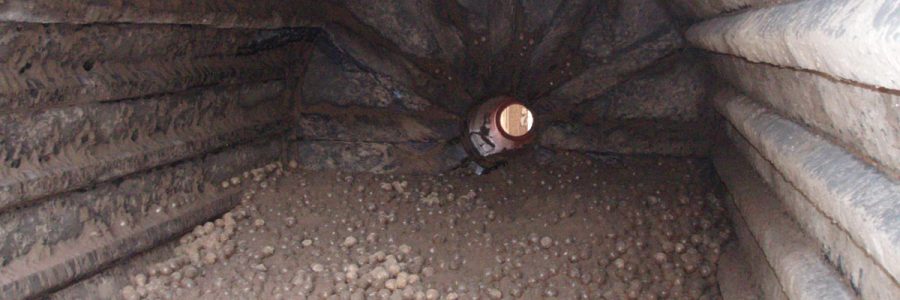
INCREASING OPERATIONAL EXCELLENCE WITH OPTIMUM MILL LINING DESIGN
As operators seek to optimize income from mining, operational excellence and the ability to find new productivity gains are coming into focus. Tactics to do this can include a re-evaluation of a mine’s maintenance and procurement approach. The two are entwined because a tendency to exhaust equipment and/or rely on tried, tested and sometimes under-performing components can lead to more frequent downtime. Whether it’s a planned service or an emergency shutdown, any interruption to operations can have costly consequences.
An example where this approach is being put into practice is in milling technology for mineral processing, where new equipment and processes are being introduced to optimize production efficiency. This includes reducing the number of production lines in action at any one time, so increasing mill sizes to enable the same, if not greater, throughput levels.
One of the key advantages to this approach is that scheduled and unscheduled downtime is reduced. However, the activity levels of each mill must be closely managed to ensure that productivity remains high. Similarly, components used within the mill must guarantee optimum performance and reliability, so that unexpected maintenance or replacement is minimized.
Here, we discuss the importance of mill liner design and material selection to ensure the optimum flow of minerals and longer lasting performance of the lining.
The risks associated with poor mill lining designs
Liners play an important role in protecting the interior mill shell from impact and wear, while transferring energy to optimize grinding efficiency. These conflicting requirements mean that the lining must be carefully designed to ensure optimum, long lasting performance and reduced load stress on the mill.
A key consideration is the material used to make the lining and lifter bars. For some materials, such as composite steel linings, the wear life can be unpredictable due to the quality of the steel, bonding techniques and the cracking of inserts. This can become a safety hazard requiring frequent maintenance and replacement, not to mention the additional load in the mill. The result is a loss in efficiency and throughput, increase in power draw and downtime losses, all affecting the dollar per ton recovery.
The benefits of rubber compound versus composite steel linings
Used in most secondary, tertiary and a number of primary milling applications, rubber mill linings are almost half the weight of composite steel liners and come with huge advantages such as the elimination of cracking or falling of inserts during mineral impact, as well as reduced noise levels during milling.
Rubber mill linings are easily monitored and wear life is predictable. Some components can also be designed with wear indicators incorporated, making it easier to identify when the lining needs to be replaced and therefore, when to schedule appropriate maintenance. As the pressure to reduce unplanned downtime builds, in order to improve efficiency and mill productivity, the ability to measure liner wear becomes invaluable.
Optimizing mill lining design
Accessible measures and practices are available to help operators to get the most out of every mill. Though considered just one of many components vital to mining operations, the lining of a grinding mill plays a key role in optimum comminution and mineral dressing. Lines are subjected to severe impact and abrasion from the mineral being ground and the media introduced into the mill to help break down the product. As such, a high quality and high wearing lining is an important part of keeping a mill online and operations running to plan.




